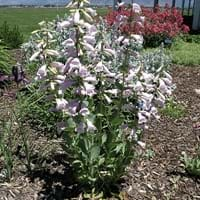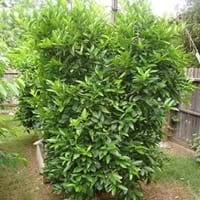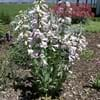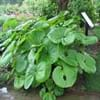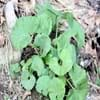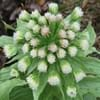Life Span
Perennial
Perennial
Type
Flowering Plants
Fruit
Origin
North-Central United States, Central United States, Western United States, Texas
Southeastern Asia
Types
Not Available
not available
Number of Varieties
Not Available
Habitat
Cultivated Beds, Sandy areas, Sunny Edge
Temperate Regions
USDA Hardiness Zone
3-9
10-11
Sunset Zone
1a, 1b, 2a, 2b, 3a, 3b, 10
H1, H2, 8, 9, 12, 13, 14, 15, 16, 17, 18, 19, 20, 21, 22, 23, 24
Habit
Upright/Erect
Oval or Rounded
Flower Color Modifier
Bicolor
Bicolor
Fruit Color
Not Available
Green, Yellow green
Leaf Color in Spring
Light Green, Gray Green
Green, Light Green
Leaf Color in Summer
Gray Green
Green, Light Green
Leaf Color in Fall
Gray Green
Green, Light Green
Leaf Color in Winter
Not Available
Light Green
Leaf Shape
Oval to egg shaped
Ovate
Plant Season
Summer
Spring, Summer, Fall, Winter
Sunlight
Full Sun, Partial Sun
Full Sun, Partial Sun
Type of Soil
Clay, Loam
Loam
The pH of Soil
Neutral, Alkaline
Acidic, Neutral
Soil Drainage
Well drained
Well drained
Bloom Time
Late Spring, Early Summer, Summer
Indeterminate
Tolerances
Drought
Drought
Where to Plant?
Container, Ground, Pot
Container, Ground, Pot
How to Plant?
Cuttings, Divison, Seedlings
Seedlings, Transplanting
Plant Maintenance
Medium
Medium
Watering Requirements
Keep the Soil well drained, Needs a lot of moisture in the growing season, Reduce watering in winter
Do Not over Water, Requires regular watering
In Summer
Lots of watering
Lots of watering
In Spring
Moderate
Moderate
In Winter
Average Water
Average Water
Soil pH
Neutral, Alkaline
Acidic, Neutral
Soil Type
Clay, Loam
Loam
Soil Drainage Capacity
Well drained
Well drained
Sun Exposure
Full Sun, Partial Sun
Full Sun, Partial Sun
Pruning
Remove damaged leaves, Remove dead branches, Remove dead leaves
Prune in summer, Remove damaged leaves
Fertilizers
All-Purpose Liquid Fertilizer
All-Purpose Liquid Fertilizer
Pests and Diseases
Red blotch
Aphids, Mites, White outside
Plant Tolerance
Drought
Drought
Flowers
Showy
Insignificant
Flower Petal Number
Single
Single
Foliage Texture
Medium
Medium
Foliage Sheen
Matte
Glossy
Attracts
Birds, Bumblebees
Birds, Butterflies
Allergy
no allergic reactions
Dental erosion
Aesthetic Uses
Showy Purposes
Not Used For Aesthetic Purpose
Beauty Benefits
Not Available
Not Available
Environmental Uses
Air purification
Air purification
Medicinal Uses
Analgesic, Febrifuge, Stomachic
Not Available
Part of Plant Used
Root
Fruits
Other Uses
Chewing
Used As Food, Used in making beverages
Used As Indoor Plant
No
Yes
Used As Outdoor Plant
Yes
Yes
Garden Design
Rock Garden / Wall, Wildflower
Container, Edible, Fruit / Fruit Tree, Topiary / Bonsai / Espalier, Tropical
Botanical Name
PENSTEMON grandiflorus 'Prairie Snow'
CITRUS aurantiifolia 'Bearss'
Common Name
Large Beardtongue, Prairie Snow Beardtongue
Bearss Lime, Shiraz Limoo, Tahiti Lime
In Hindi
Large Beardtongue
Shiraz Limoo
In German
Large Beardtongue
Bearss Kalk
In French
Large Beardtongue
Bearss chaux
In Spanish
Large Beardtongue
Bearss cal
In Greek
Large Beardtongue
BEARSS ασβέστη
In Portuguese
Large Beardtongue
Bearss cal
In Polish
Large Beardtongue
bearss wapna
In Latin
Large Beardtongue
bearss lime
Phylum
Magnoliophyta
Not Available
Class
Magnoliopsida
Not Available
Order
Scrophulariales
Sapindales
Family
Scrophulariaceae
Rutaceae
Clade
Angiosperms, Asterids, Eudicots
Angiosperms, Eudicots, Rosids
Tribe
Not Available
Not Available
Subfamily
Not Available
Not Available
Number of Species
Not Available
Difference Between Large Beardtongue and Bearss Lime
If you are confused whether Large Beardtongue or Bearss Lime are same, here are some features about those plants to help you choose better. Many people think that these two plants have the same characteristics, but one can see Large Beardtongue and Bearss Lime Information and learn more about it. Fertilizers required for proper growth of Large Beardtongue are All-Purpose Liquid Fertilizer, whereas for Bearss Lime fertilizers required are All-Purpose Liquid Fertilizer. Hence, one should know the basic difference between Large Beardtongue and Bearss Lime if you are planning to have them in your garden to enhance its beauty.
<
Flowering PlantsImportance of Large Beardtongue and Bearss Lime
Want to have the most appropriate plant for your garden? You might want to know the importance of Large Beardtongue and Bearss Lime. Basically, these two plants vary in many aspects. Compare Large Beardtongue and Bearss Lime as they differ in many characteristics such as their life, care, benefits, facts, etc. Every gardener must at least have the slightest clue about the plants he wants to plant in his garden. Compare their benefits, which differ in many ways like facts and uses. The medicinal use of Large Beardtongue is Analgesic, Febrifuge and Stomachic whereas of Bearss Lime is Not Available. Large Beardtongue has beauty benefits as follows: Not Available while Bearss Lime has beauty benefits as follows: Not Available.
Compare Facts of Large Beardtongue vs Bearss Lime
How to choose the best garden plant for your garden depending upon its facts? Here garden plant comparison will help you to solve this query. Compare the facts of Large Beardtongue vs Bearss Lime and know which one to choose. As garden plants have benefits and other uses, allergy is also a major drawback of plants for some people. Allergic reactions of Large Beardtongue are no allergic reactions whereas of Bearss Lime have Dental erosion respectively. Having a fruit bearing plant in your garden can be a plus point of your garden. Large Beardtongue has no showy fruits and Bearss Lime has showy fruits. Also Large Beardtongue is not flowering and Bearss Lime is not flowering . You can compare Large Beardtongue and Bearss Lime facts and facts of other plants too.
